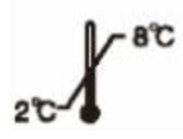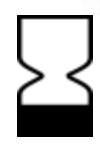Procalcitonin (PCT)
Keywords:
Inflammation
Category:
Inflammation
Brochure Download:

Tel:
Procalcitonin (PCT) Assay Kit
Instructions for Use (Magnetic Microparticle Chemiluminescence Method)
Instruction of Procalcitonin (PCT) Detection Kit (Magnetic Solid Phase Chemiluminescent Immunoassay)
【Product Name】
Generic Name: Procalcitonin (PCT) Assay Kit (Magnetic Microparticle Chemiluminescence Method)
English Name: Procalcitonin (PCT) Detection Kit (Magnetic Solid Phase Chemiluminescent Immunoassay)
【Packaging Specifications】
50 tests/box, 100 tests/box, 200 tests/box.
Calibrator: 6 × 1 bottle (optional), 2 × 1 bottle (optional)
Quality Control: 2 × 1 bottle (optional)
【Intended Use】
The Procalcitonin (PCT) Assay Kit (Magnetic Microparticle Chemiluminescence Method) (hereinafter referred to as this kit) is used for the in-vitro quantitative detection of procalcitonin (PCT) in human serum.
Used for the diagnosis and prognosis of diseases such as systemic inflammatory response syndrome, sepsis, and acute respiratory distress syndrome. Procalcitonin (PCT) is a polypeptide containing 116 amino acids synthesized and secreted by thyroid C cells. Under normal conditions, the serum PCT level is extremely low. In patients with bacterial infection and sepsis, the PCT concentration in serum is significantly increased. When the body is infected by bacteria, toxin-like substances induce the release of inflammatory factors, which in turn stimulate organs including the lungs, kidneys, liver, and fat and muscle cells to release PCT into the peripheral blood. The half-life of PCT in blood is 25-30h. In cases of systemic bacterial infection, an increase in PCT concentration in the patient's plasma can be detected after 2h, a sharp increase after 6h, and it remains at a high level for 8-24h. Some traditional diagnostic indicators, such as C-reactive protein (CRP), can only be detected 8-12h after the onset of the inflammatory process, which is significantly later than the increase in PCT levels. Other inflammatory factors such as interleukin-6 and tumor necrosis factor-α have very short half-lives (minutes to hours) and are more complex to detect. Therefore, PCT, with its relatively long half-life (25-30h) and high stability in the body, is considered the ideal early specific diagnostic indicator. In cases of local infection, viral infection, cancerous fever, chronic non-specific inflammation, or autoimmune diseases, the PCT concentration does not increase or only slightly increases, while it only increases significantly in cases of systemic severe infection, indicating that PCT has high specificity. Therefore, PCT can serve as a reliable indicator for judging the condition and prognosis of various inflammations and observing treatment efficacy. Common laboratory diagnostic methods include immunochromatography, latex immunoturbidimetry, and enzyme-linked immunosorbent assay.
【Test Principle】
This kit uses a direct sandwich method: Biotin-labeled PCT antibody, acridinium ester (AE)-labeled PCT antibody, and PCT in the sample, calibrator, or quality control combine to form a "sandwich" complex. Then, streptavidin-coated magnetic microparticles are added. Through the specific binding of streptavidin and biotin, the antigen-antibody complex is connected to the magnetic particles. Under the action of an external magnetic field, the complex formed by the immunoreaction is separated from other unbound substances. After washing the complex, a pre-trigger solution and a trigger solution are added. Acridinium ester forms an unstable excited intermediate under the action of the pre-trigger solution and the trigger solution. When the excited intermediate returns to the ground state, it emits photons, forming a chemiluminescent reaction, which can be detected using a chemiluminescence instrument. Within the detection range, the chemiluminescence intensity is proportional to the PCT concentration in the sample. The PCT concentration in the sample can be calculated using a four-parameter Logistic equation.
【Main Components】
1. Product Composition
PCT magnetic microparticle reagent: 1 bottle, streptavidin-coated magnetic microparticles;
PCT reagent 1: 1 bottle, biotin-labeled PCT antibody conjugate;
PCT reagent 2: 1 bottle, acridinium ester (AE)-labeled PCT antibody conjugate;
Calibrator (lyophilized powder): 6 bottles or 2 bottles (optional), containing BSA buffer with different amounts of PCT antigen added. The calibrator value is obtained by scanning the calibrator QR code. After dissolving at room temperature, it is detected;
Quality control (lyophilized powder): 1 bottle each of high and low points (optional), containing BSA buffer with different amounts of PCT antigen added. The target range of the quality control is obtained by scanning the quality control QR code. After dissolving at room temperature, it is detected.
Note ①: Reagents from different batches of kits are prohibited from being used interchangeably.
Note ②: Six calibrator points or two calibrator points are optional. If calibrators and quality controls have been provided to the user, the kit does not need to be reconfigured.
2. Matching Reagents
The following matching reagents are not included in this product but are required for detection:
Pre-trigger solution and trigger solution: Trigger acridinium ester to catalyze the production of photons, so that the chemiluminescence intensity can be detected using a chemiluminescence immunoassay instrument.
Washing solution: Diluted for washing the reaction system.
Source: Provided by our company.
Note: To ensure the accuracy of the test results, the manufacturer of the matching reagents should not be changed arbitrarily during the test.
3. Calibrator Traceability
Calibrators are traceable to the enterprise's selected measurement procedure.
【Storage Conditions and Shelf Life】
The reagents are stable for 15 months at 2-8℃, protected from light, and should not be frozen.
After opening, the liquid reagent is stable for 30 days at 2-8℃, protected from light.
【Production Date】
See product label.
Applicable Instruments
CosmSMART 500S, 6500 or Tuochuang Medical TC-300 fully automated chemiluminescence immunoassay analyzer
Sample Requirements
1. This kit is suitable for serum and whole blood samples.
2. After blood collection, serum should be separated immediately for analysis to avoid hemolysis. Testing must be completed within 24 hours at room temperature; it is stable for 3 days at 2-8℃ and 30 days at -20℃. Avoid repeated freezing and thawing.
3. Frozen or refrigerated samples should be returned to room temperature and mixed thoroughly before use.
4. Avoid using samples with severe hemolysis or high concentrations of lipemia.
5. The sample volume should be no less than 200μL.
Testing Method
Note: Please read the instructions carefully before use. Working conditions: Room temperature (15~35℃); Relative humidity ≤80%.
1. Pre-test preparation
1.1 Before the test, all reagents should be placed at room temperature, and the instrument should be preheated for at least 30 minutes;
1.2 According to the system operating instructions, load the reaction tubes (cups), add or replace the matching reagents, clean the waste liquid and tubes, and perform the liquid path filling operation.
2. Reagent and sample loading
2.1 Before loading the reagents, place the reagents to be used on a mixing device and mix thoroughly. Visually inspect the reagent solution components; they should be clear, free of foreign matter, precipitates, and flocculent matter. The magnetic microparticle reagent should be a uniform suspension without obvious aggregation;
2.2 According to the system operating instructions, scan the reagent barcodes and complete the loading of the magnetic microparticle reagent and the anti-reagent;
2.3 After mixing the calibrators and quality control samples, transfer them to the instrument's dedicated reaction cups and load them into the instrument's sample positions. After scanning, load the centrifuged serum samples directly into the instrument's sample positions.
3. Detection steps
For optimal detection performance, please follow the relevant instructions in this manual and operate according to the fully automated chemiluminescence analyzer operating manual.
Note: The detection reaction process and related parameters have been predefined in the instrument operating software.
4. Calibration curve and calibration
The calibration curve is obtained by scanning the main curve card to generate it directly, or by directly detecting six calibrator points to generate a fit, and the system supports obtaining a working calibration curve using a two-point calibration method.
Note ①: Due to inter-instrument differences and system differences caused by different operators, operating environments, and matching general reagents, the six-point direct calibration method is recommended to obtain the working calibration curve.
Note ②: Due to reagent activity drift and changes in general reagent batches, the calibrated working curve needs to be recalibrated after a certain period of use. Recalibration should be performed under the following circumstances:
l After 1 month (28 days) of using the same batch number of reagents;
l When using a new batch of reagents, the whole box or pre-activation liquid and activation liquid;
l When the quality control values are outside the quality control range;
l After each maintenance of the measuring instrument.
5. Result output
The measuring instrument automatically calculates the PCT concentration of each sample using a working curve obtained by two-point calibration from the standard curve, and the results are expressed in ng/mL.
6. Quality control
Two levels of quality control samples should be measured daily along with sample testing, treating the quality control samples as patient samples;
Note: It is recommended to use at least two levels of commercial quality control products. If the measured results are within the system's acceptable quality control range or within your specified range (determined by an appropriate internal laboratory quality control program), the test results are satisfactory; otherwise, it indicates that the test results are unreliable and a test report should not be issued.
Reference Range
Normal range of this kit: ≤0.05ng/mL.
Note: The PCT levels measured will vary depending on the region, individual, and method used. Therefore, we recommend that each laboratory establish its own normal range. A diagnosis should not be made based solely on the PCT value obtained by this method; the results should be analyzed in conjunction with other clinical data, including the patient's specific condition and treatment status.
Interpretation of Test Results
1. Due to methodological or antibody specificity reasons, testing the same sample using reagents from different manufacturers may yield different results. Therefore, results obtained using different reagents should not be directly compared to avoid erroneous medical interpretations.
2. Test results exceeding the measurement range of the kit are calculated results extrapolated from the calibrator curve. When reporting such results, please pay special attention. If an accurate value is desired, dilute the sample appropriately before testing; the maximum dilution factor is 10 times.
3. Quality control products can serve as a reference for the reliability of the results of the current experiment; their measured values should be within the allowable range specified on the quality control sheet for this batch of products. Test results should be judged comprehensively based on the reference range and other clinical factors and results. When the test result is close to the upper limit of the reference range, consider performing a confirmatory test on the sample.
Limitations of the Test Method
1. Severe hemolysis (hemoglobin ≥500mg/dL), lipemia (triglycerides ≥1500mg/dL), jaundice (bilirubin ≥20mg/dL), and contaminated samples may affect the test results and should be avoided;
2. The test results of this kit are for clinical reference only and cannot be used alone as the basis for confirming or excluding cases. To achieve diagnostic purposes, these test results must be used in conjunction with clinical examinations, medical history, and other examinations.
3. This product can be used for the determination of human serum samples. The reliability of PCT concentration determination in other body fluid samples has not been fully confirmed.
Product Performance Indicators
1. Reagent Performance Indicators
1.1 Accuracy: Recovery rate P is 85%-115%.
1.2 Precision: Intra-batch precision ≤8%, inter-batch precision ≤10%.
1.3 Detection limit: Should not exceed 0.02ng/mL.
1.4 Linearity: Linear range (0.02~100.0) ng/mL, correlation coefficient r≥0.9900.
1.5 Specificity: The determination results of human katacalcin at a concentration of 30ng/mL, human calcitonin at a concentration of 10ng/mL, human α-CGRP at a concentration of 10000ng/mL, and human β-CGRP at a concentration of 10000ng/mL should not exceed 0.05 ng/mL.
2. Calibrator Performance Indicators
2.1 Accuracy: Recovery rate P is 85%-115%.
2.2 Homogeneity: Inter-bottle difference (CV) ≤8%.
3. Quality Control Product Performance Indicators
3.1 Expected results: Test values should be within ±15% of the target value of the quality control product.
3.2 Homogeneity: Inter-bottle difference (CV) ≤8%.
【Precautions】
1. This reagent is for in vitro diagnostic use only. Reagents from different batches are prohibited from being used interchangeably, and expired reagents should not be used.
2. Some components of the kit contain bovine-derived materials, but these raw materials are not from countries or regions with bovine spongiform encephalopathy (BSE) epidemics, and their production is not carried out in countries or regions with BSE epidemics. If it is bovine serum, it will be filtered and sterilized after purchase before being used in kit production. Therefore, the kit does not pose a risk of transmitting BSE; some components of the kit contain porcine-derived materials, but these raw materials are not from countries or regions with foot-and-mouth disease epidemics, and their production is not carried out in countries or regions with foot-and-mouth disease epidemics. If it is porcine serum, it will be filtered and sterilized after purchase before being used in kit production. Therefore, the kit does not pose a risk of transmitting foot-and-mouth disease; this reagent does not contain human serum, but it should still be regarded as a potential biohazard.
3. This reagent contains preservatives. Avoid contact with skin. If skin accidentally comes into contact with the reagent, rinse thoroughly with plenty of water.
4. All reagents should be stored at 2~8℃, avoid freezing at -20℃, and equilibrate to room temperature before use.
5. The magnetic microparticle reagent should be thoroughly mixed before use, and strong shaking should be avoided.
【Explanation of Labels】
 Store at 2-8℃
Store at 2-8℃  Avoid direct sunlight
Avoid direct sunlight  Place upright
Place upright
 In vitro diagnostic reagent
In vitro diagnostic reagent  Production date
Production date  Expiration date
Expiration date
 Product batch number
Product batch number  See instructions for details
See instructions for details
【References】
1. Zaitsev AA, Kondrat'Eva TV, Madzhanova ER. Diagnostic and predictive capabilities of the quantification of C-reactive protein in patients with community-acquired pneumonia. Voen Med Zh, 2013, 334(11): 35-40.
2. Liao Jinli, Huang Wenjie, Yuan Weifeng, et al. The value of serum procalcitonin, adrenal medullary substance, and myeloid cell trigger receptor-1 in the diagnosis and prognosis of pneumonia. Clinical Journal of Pulmonary Medicine, 2010, 15(6):757-759.
3. Miedema KG, De Bont ES, Elferink RF, et al. The diagnostic value of CRP, IL-8, PCT, and sTREM-1 in the detection of bacterial infections in pediatric oncology patients with febrile neutropenia. Support Care Cancer, 2011, 19(10):1593-1600.
4. Chang Tingting, Wang Ling, Pan Xudong, et al. Clinical significance of serum procalcitonin level determination in elderly patients with severe pulmonary infection. Chinese Journal of Gerontology, 2010, 8(15):30.
【Basic Information】
Registrant/Manufacturer: Zhejiang Tuochuang Medical Technology Co., Ltd
Address: No. 1 Building, Thousand Talents Plan Industrial Park, No. 78, Zhancheng Avenue, Zhuji City, Zhejiang Province
Production address: No. 1 Building, Thousand Talents Plan Industrial Park, No. 78, Zhancheng Avenue, Zhuji City, Zhejiang Province
After-sales service unit: Zhejiang Tuochuang Medical Technology Co., Ltd
Production license number:
Contact number: 0575-87178692
Fax:
Post code: 311800
Website: www.zjtcyl.com
【Medical Device Registration Certificate Number/Product Technical Requirements Number】
【Approval Date and Revision Date of Instructions for Use】
Approval date:
Revision date:
Previous Page
Next Page
Related Downloads
Related Products
Contact Us
Adhering to the user-centric approach, while continuously improving service standards and capabilities, we will remain true to our original aspiration, strive for excellence, and wholeheartedly serve our customers!
Contact Number
Company Address
No. 1, Building 1, No. 78, Zhancheng Avenue, Taozhu Street, Zhuji City, Zhejiang Province

Scan to view on mobile phone
Copyright © 2025 Zhejiang Tuochuang Medical Technology Co., Ltd Powered by 300.cn
